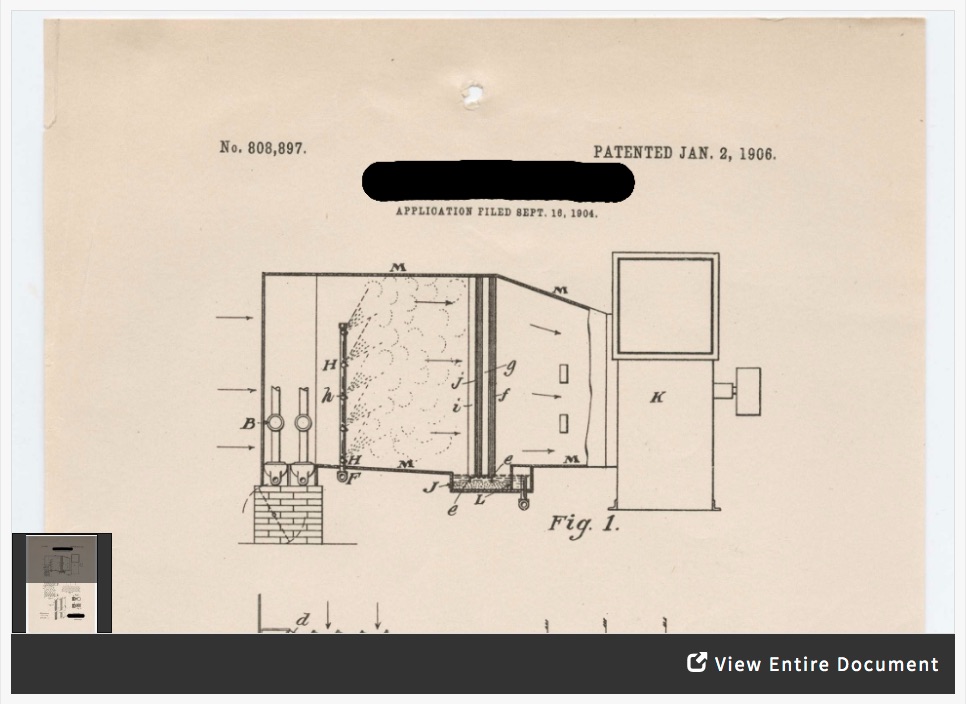This activity can be used during a unit on the modern inventions and innovations and/or to build document analysis skills in younger students. For grades grades 3-6. Approximate time needed is 15-20 minutes.
Ask students to look at the partially obscured patent drawing. Without providing any context, model document analysis:
- Quickly scan this document. What do you notice first?
- Describe the document and the invention it depicts as if you were explaining it to someone who can’t see it.
- Based on what you can see, what do you think is the purpose of this invention? List evidence from the document to explain your opinion.
After some discussion, reveal that this is a patent drawing for an important invention. If students are unaware of the definition of a patent, provide a brief definition that a patent gives an inventor a temporary monopoly on his or her invention. Explain how in the United States, the Constitution gave Congress the power to "To promote the progress of science and useful arts by securing for limited times to authors and inventors the exclusive right to their respective writings and discoveries" in Article I, Section 8.
Ask students to offer educated guesses as to the specific invention. If no one guesses air conditioning, provide the following clues from the inventor's description of the invention:
- "This invention relates to...ventilating and heating buildings."
- "The object of the invention is to provide an efficient practical apparatus...which will thoroughly separate all solid impurities, floating particles, and noxious material from the air without altering its temperature or humidity."
Following a brief discussion and potential guesses, provide the following context for the invention. As you provide this information, ask if students can guess the invention.
In 1902, in his first job out of college, this inventor was asked to help design a system for Sackett-Wilhelms Lithographing & Publishing Company of Brooklyn because humidity was destroying their multi-color prints. He was able to drop humidity at the publishing company to 55%.
He eventually created his own company, which was named after him, and developed systems for Macy’s, the U.S. Congress, the White House, and Madison Square Garden.
After sharing this historical context, ask students to brainstorm how air conditioning has been used since its invention? How has air conditioning impacted the settlement and development of the American West?





